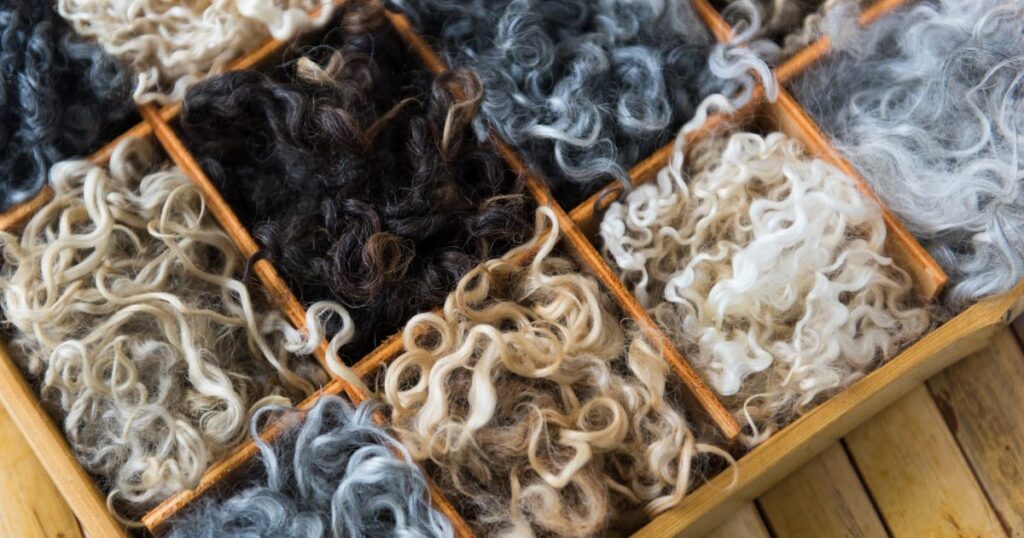Thinking about buying a wool garment or other item and cannot decide what kind of wool to go with? After all, there are many types of wool and natural fiber out there.
From Merino wool to Mohair, lambswool to camel hair, angora to alpaca and more, there’s certainly a lot to learn about these different natural fibers and the many unique animals that produce them around the world.
As we’ll learn in today’s article, sheep aren’t the only animals that produce beautiful natural fibers for use in clothing and other items that keep us warm, adorn us, and improve our lives.
Let’s take a look at how sheep’s wool and other natural fibers are grown and harvested, what animals they come from, and the qualities that make the fabrics (and the garments made from them) unique.
Popular Types of Wool & Natural Fiber
There are many different types of wool and natural fiber products that are sought after for their unique characteristics.
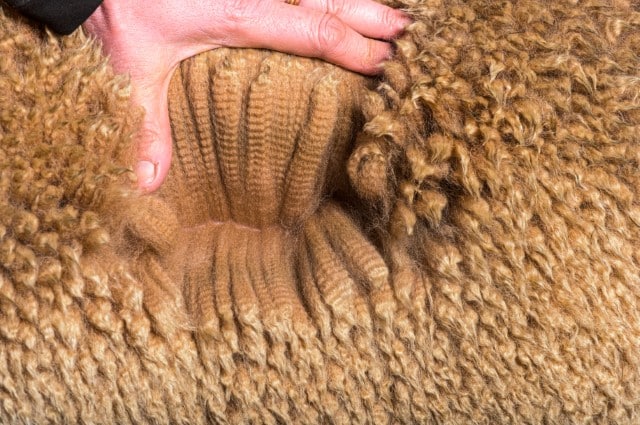
In this article I’ll highlight some of the most popular wool types and natural fibers in the world, including:
- Merino Wool
- Lambswool
- Mohair
- Shetland Wool
- Camel Hair
- Angora
- Alpaca
- Qiviut
- Vicuna
- Cashmere
Let’s start with one of the most well-known wool varieties globally.
Merino Wool
A fine and high-quality wool, Merino comes from the Merino sheep. This breed of sheep originally came from Spain but most Merino today are raised in Australia (and New Zealand).
Merino boasts a remarkably soft hand and has extremely fine fibers. The wool from Merinos can be used for a variety of clothing items but can be an especially great choice for base layers that will directly touch your skin.
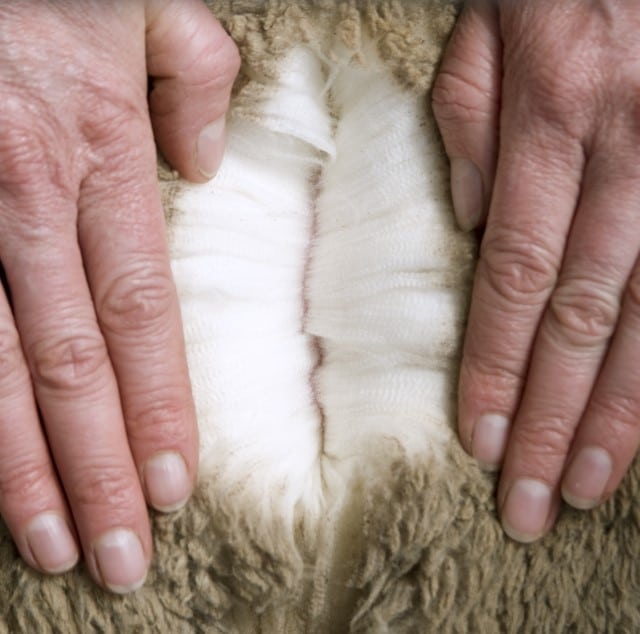
Merino is harvested through the sheep shearing process. One reason why Merino is more expensive than other kinds of wool is the fact that it has a lower yield.
This is a result of the special scouring process that must be done to get rid of the fatty types of grease that come in the wool.
The natural layer of lanolin is removed from Merino wool. This process involves chemicals and after it is done, the yield usually only offers approximately half of the original amount of wool that was harvested. It’s also quite labor intensive.
Merino wool is breathable and has a smooth, soft hand and appearance that you will not find with other wools. Its superior temperature regulation abilities mean that it’s suitable for many kinds of sportswear and outdoor wear.
More About Merino Wool
Merino sheep live in areas of New Zealand and Australia that experience a full range of temperatures, with frigidly cold weather at certain times of the year and extreme heat at others.
This popular wool can keep you warm in cold weather and cool in warm weather.
Merino is recognized as being one of the finest materials you can choose in men’s suiting. This is because of the breathability and temperature regulation characteristics we discussed earlier, as well as its elasticity and resistance to losing its shape.
Most Merino wool is made into garments like sweaters and even ones you wouldn’t guess like shirts, tank tops, and blouses. When it comes to homeware, Merino is commonly found in blankets.
Lambswool
Only the wool from a lamb’s first shearing is considered to be lambswool. This usually takes place at about seven months of age.
Lambswool tends to be extremely fine and soft, and it features exceptional smoothness. Unlike sheep’s wool, lambswool is hypoallergenic.
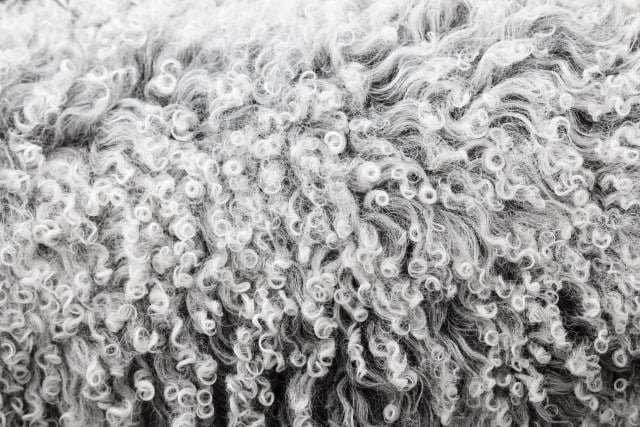
Also, it’s a great choice if you find coarser kinds of wool a bit on the scratchy side. Lambswool is usually warmer than Merino wool.
However, it’s not as fine as Merino.
If you’re super sensitive about coarseness or itchiness, Merino is probably a better bet. However, lambswool will certainly be smoother than most other kinds of wool.
Lambswool is often found in knitwear (such as sweaters and cardigans), as well as accessories like mittens, scarves, and hats.
It is also used as padding in the pointe shoes used by ballet dancers. When it comes to homeware, lambswool is often used in bedding and even upholstery and carpets.
Mohair
Mohair is taken from a specific breed of goat, the Angora. During shearing, the topcoat’s guard hairs are frequently included along with the undercoat.
While Mohair fibers are very thick in themselves, they are not as coarse as some other types of wool. This is because Angora goats live in a mild climate.
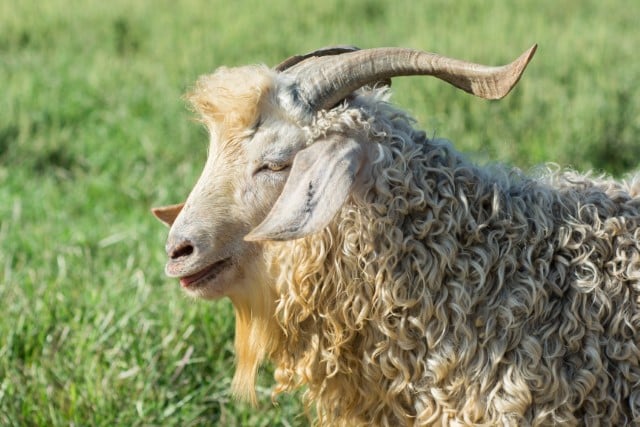
The longer length of Mohair fibers means that the fiber is smooth. Yet Mohair also has a fuzzy quality.
After the Angora goat is sheared with large scissors (the goat is completely immobilized to prevent any kind of injury), the wool is washed.
Once shearing is done, we carry out the carding process (the process through which chunks of the wool are broken down into strands).
After that, we spin the wool into yarn. Then, there is a final washing.
Mohair’s greatest strength is its durability. In fact, it’s recognized as the most durable of all animal fibers.
Mohair’s smoothness is key to its strength. It is used in garments such as coats, sweaters, hats, and other types of winter items that need excellent insulation.
It is also found in wall hangings and craft yarns, as well as doll wigs. There are rugs and carpets available that are made of Mohair.
Shetland Wool
Shetland wool is taken from the Shetland sheep, which are found in Scotland’s Shetland Islands.
This type of wool is coarser and thicker than other kinds of wool, especially fine ones like Merino.
Shetland sheep need thicker wool because of the cold climate of the place they live.
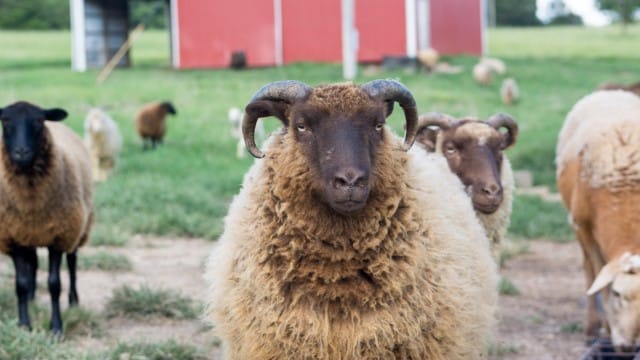
The shearing and processing process for Shetland wool is similar to that of other kinds of sheep’s wool. Once a year, the sheep is sheared.
The farmer will then do skirting, in which they will trim the edges of the fleece and get rid of matted areas, manure, burrs, dirt, and other kinds of debris.
Other procedures are then done after that to intensively clean and wash the wool. Once all of that is done, carding and spinning are necessary.
A fantastic feature of Shetland wool is the fact that it won’t pill like other kinds of wool fiber, including Merino. And of course, Shetland is wonderful for keeping you warm in the winter.
Shetland wool is often used for garments such as jackets, sweaters, and hats.
Camel Hair
Most of the time, camel hair is taken from the Bactrian camel. These camels live in extremely cold places such as regions of Russia, China, and Mongolia.
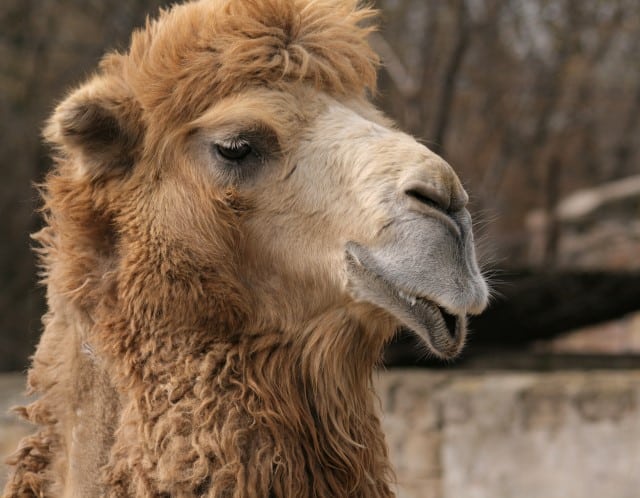
Camel hair is harvested during the animal’s molting season, which occurs in the spring each year. The hair is examined and the fibers are organized by grade on the basis of fineness and color.
There are three different grades of camel hair.
Camel hair fibers are longer and finer than wool from sheep, and they have the hollowness of mohair. These characteristics mean that camel hair is lighter weight and has more luster than sheep’s wool.
It also has softness that almost approaches cashmere. While it’s true that camel hair is quite easy to dye, it’s very common to see it in its natural shade.
This is light brown with golden undertones. Camel hair is extraordinarily waterproof.
It’s also remarkably durable, with many fans saying it never wears out. It won’t pill or lose its shape, qualities possible because of camel hair’s long fibers.
Camel hair gets softer over the years. You can find sweaters, coats and parkas, and scarves made of camel hair.
Angora
Don’t confuse Angora wool with the Mohair wool made from the Angora goat.
Angora wool is harvested from angora rabbits. This is the warmest and finest, as well as the most lightweight, natural fiber.
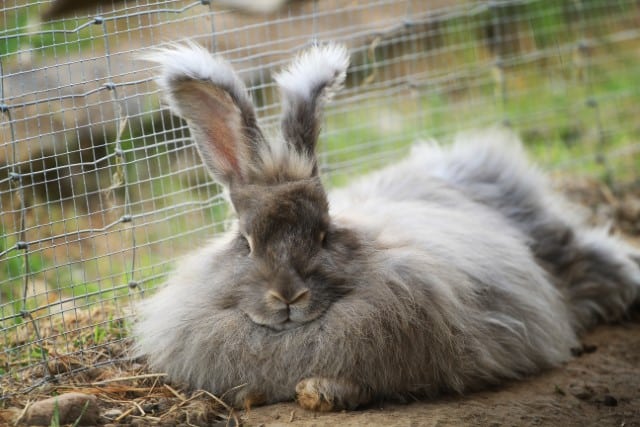
Angora is generally gathered while the rabbits are molting. On angora rabbit farms, harvesting the fur is done through shearing or plucking.
Angora fibers are smooth and hollow. These characteristics are key to the loft and warmth they provide.
Angora fibers are always exceptionally soft and silky. This type of fiber is also very fragile, which is why it is quite often mixed with other kinds of fiber, to make it more durable.
As angora is so exceptionally fine, it quickly develops problems such as felting and matting. When angora is mixed with other specially chosen fibers, it can be less prone to these issues.
One of the reasons why angora fiber is so expensive is the fact that there is a low yield even though the process of harvesting the fibers is labor intensive.
Angora wool is made to make garments such as cardigans and sweaters, hats, scarves, and coats.
Alpaca
Alpaca fiber, of course, comes from the alpaca animal.
The hairs from these animals are hollow and lightweight. The fact that Alpaca hairs are hollow mean that they provide excellent insulation.

Alpaca is warmer than wool from sheep.
Farmers harvest this natural fiber through shearing, in much the same way as they do from a flock of sheep.
Almost as soft as cashmere, Alpaca fiber is much stronger and more durable. If you have allergies, Alpaca is probably a good choice for you as it’s naturally hypoallergenic.
Some of the garments Alpaca is commonly used for are sweaters, outdoor garments, and sportswear, and even pants, shirts, and socks. You can even find rugs and bed sheets made of Alpaca.
Qiviut
Qiviut is the wool taken from an arctic muskox’s undercoat. This animal is bred in Alaska and Canada.
Its undercoat sheds and the wool collected by the breeders each molting season (the spring).
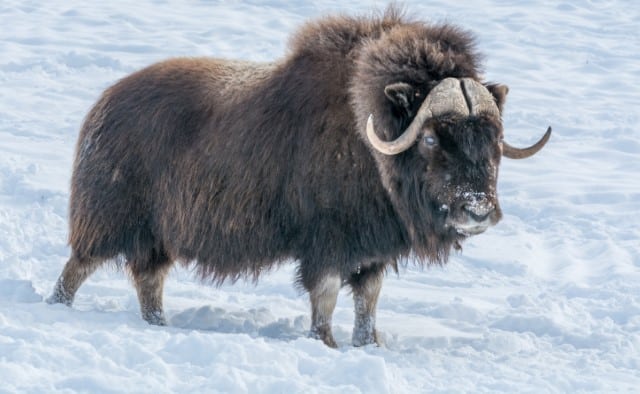
Handlers experienced with the animals will comb them periodically during shedding. An adult arctic muskox is able to shed between five and six pounds of its wool each molting season.
Qiviut fibers are finer than even the finest varieties of sheep’s wool. At the same time, it’s more durable and softer, as well as eight times warmer.
A great feature of this fiber is that it won’t shrink when wet. Qiviut is often made into items such as socks and caps or hats.
Vicuna
This is the rarest kind of wool available. It is taken from the vicuna, a relative of the llama and alpaca that comes from the Andes.
Vicuna wool is exceptionally warm and is finer than even cashmere. Vicuna is usually kept in its natural state without any dyes, as using chemicals can damage it.
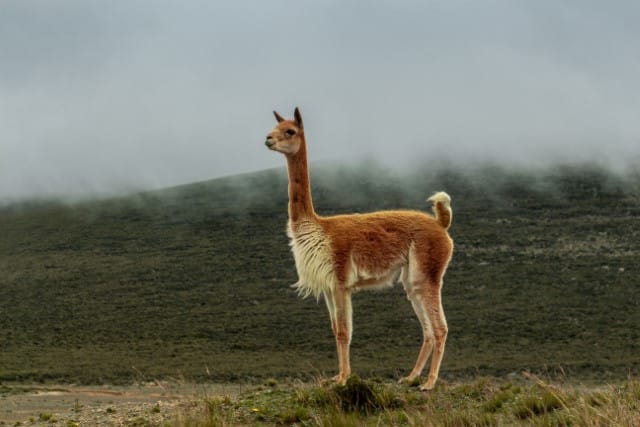
The vicuna population fell to only 5,000 in 1960. Since then, the government of Peru has taken measures to preserve the species.
This is why there is strict regulation of harvesting and exportation of vicuna. To shear vicunas, they must be caught in the wild and then shorn.
This can only happen once every two years. Each animal can be shorn only five times in its life.
This is one of the reasons why this wool is so costly. One yard can cost as much as $3,000!
Vicuna is made into garments such as cardigans, coats, and scarves.
You will have to be ready for high prices if you want to buy items made of this material. A coat may cost as much as tens of thousands of dollars!
Cashmere
Cashmere is different from wool in that it is taken from Kashmir (also referred to as cashmere) goats. It is taken from the goat’s undercoat during its molting season.
Some cashmere producers like to shear their goats all at once. The yield of cashmere taken from each goat is very small.
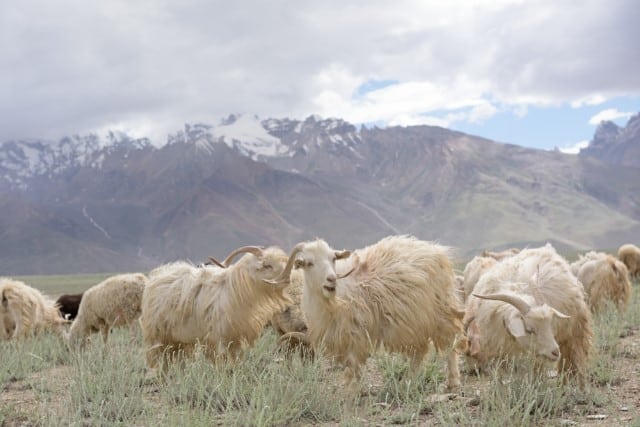
In fact, it will take the cashmere from two goats to make one sweater. Cashmere has an incredibly fine fiber that has around the same thickness as the finest Merino.
Cashmere is much more expensive than even Merino wool. For many of us, cashmere is the quintessential luxury material.
You can find cashmere sweaters and cardigans, hats (like beanies) and even sweatpants. Check to see what grade the cashmere is before making your investment.
Over the last few years, cheap grades of cashmere that aren’t worth your money have come onto the market. They fall apart quickly and sometimes they have other kinds of (undesirable) materials in them.
Understand Different Types of Wool Before You Buy
It’s clear that there are many different types of wool and other natural fibers, and it’s well worth your time to understand each and decide which one will best suit your needs.
While many of us tend to automatically think of sheep when we hear the word “wool,” there are actually several other kinds of wool that may interest you.
While some of the fibers I’ve talked about here (such as cashmere) aren’t wool, they’re still natural fibers and share many of the same qualities.

